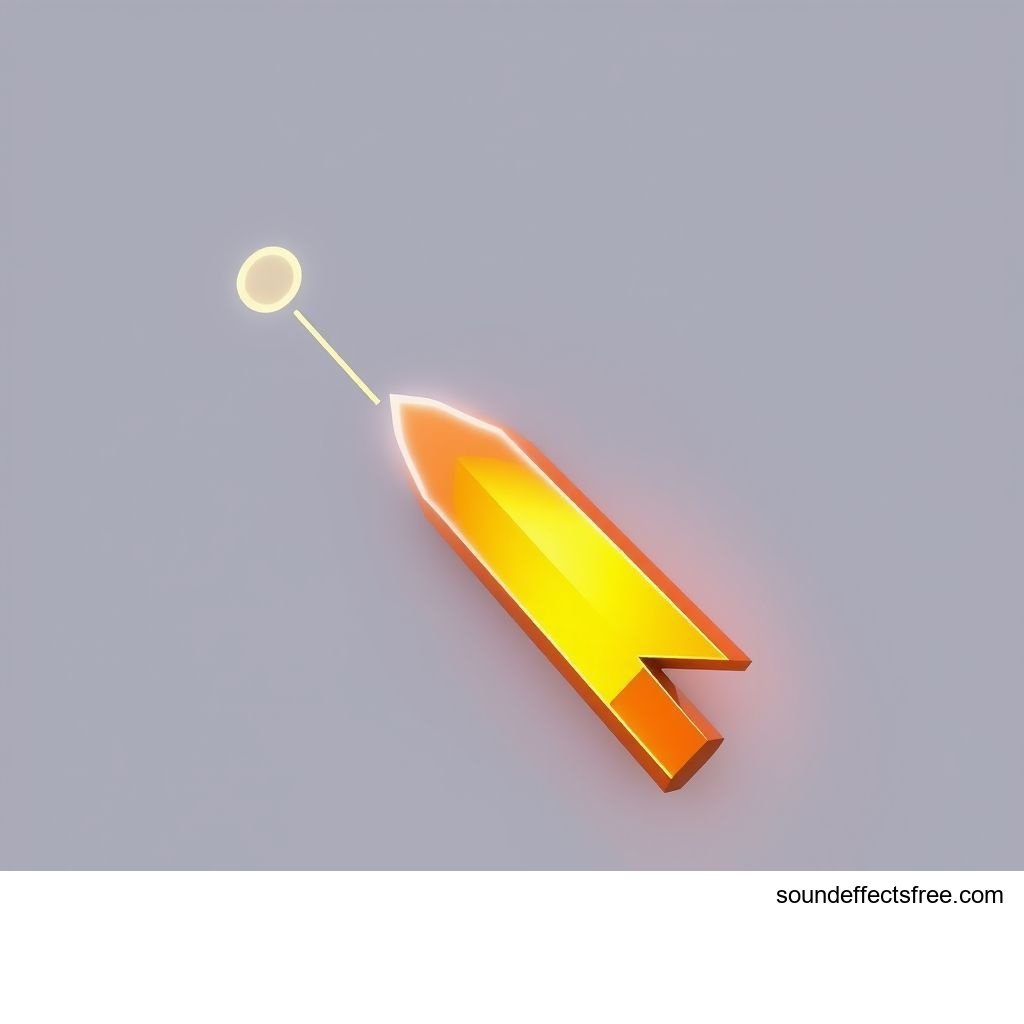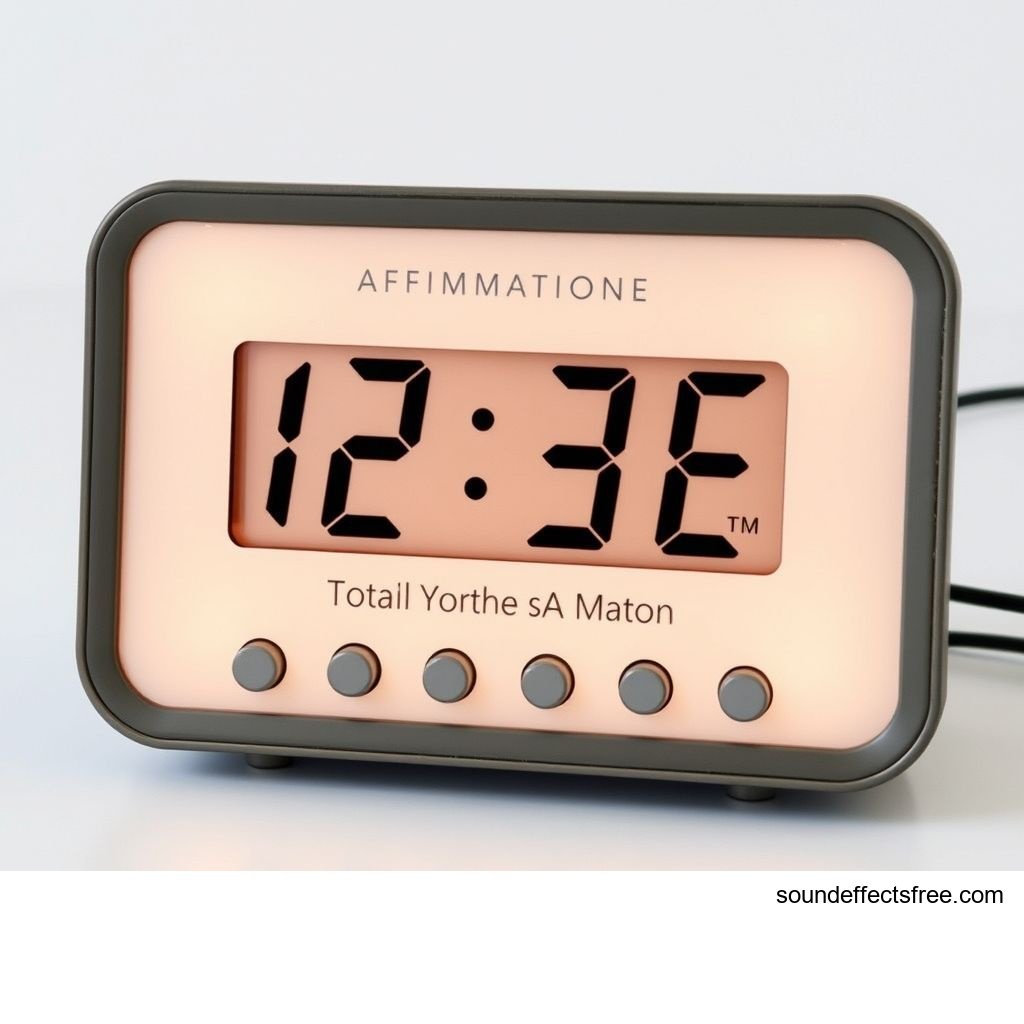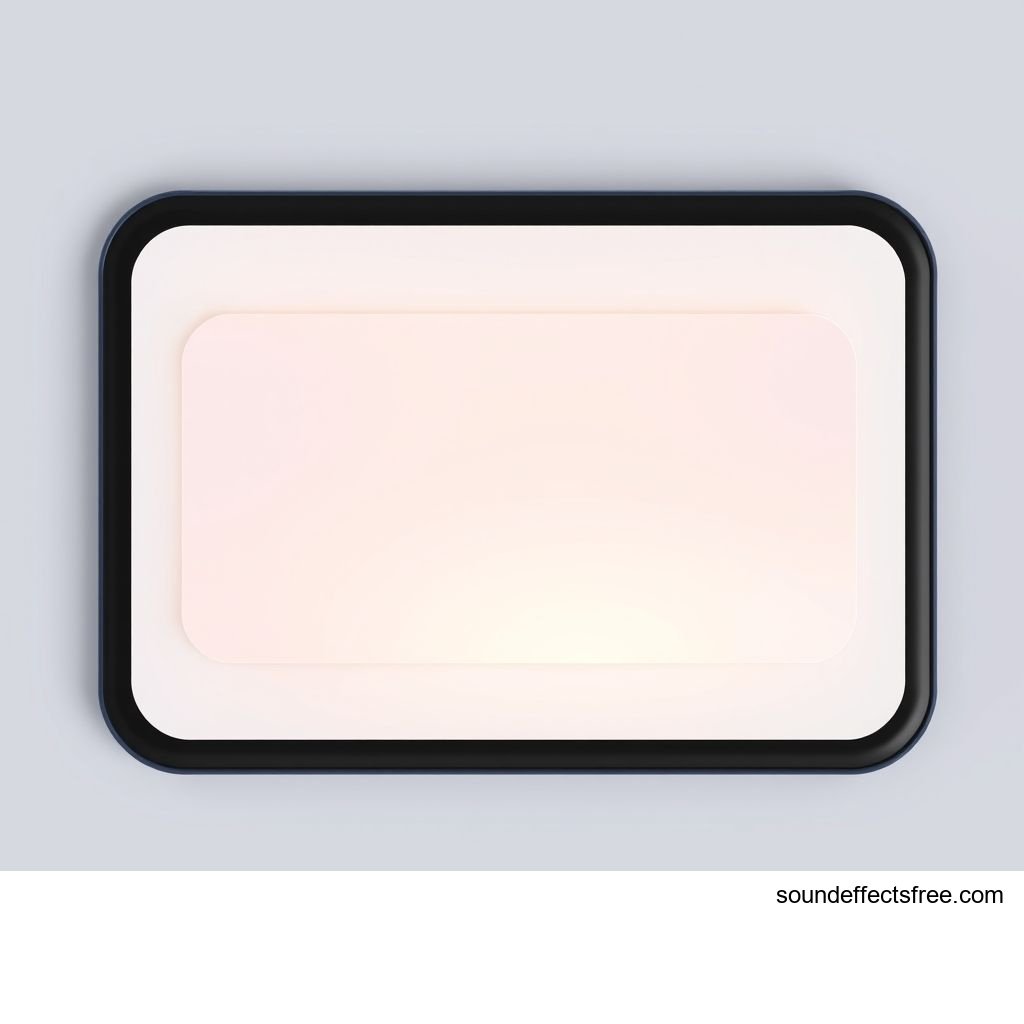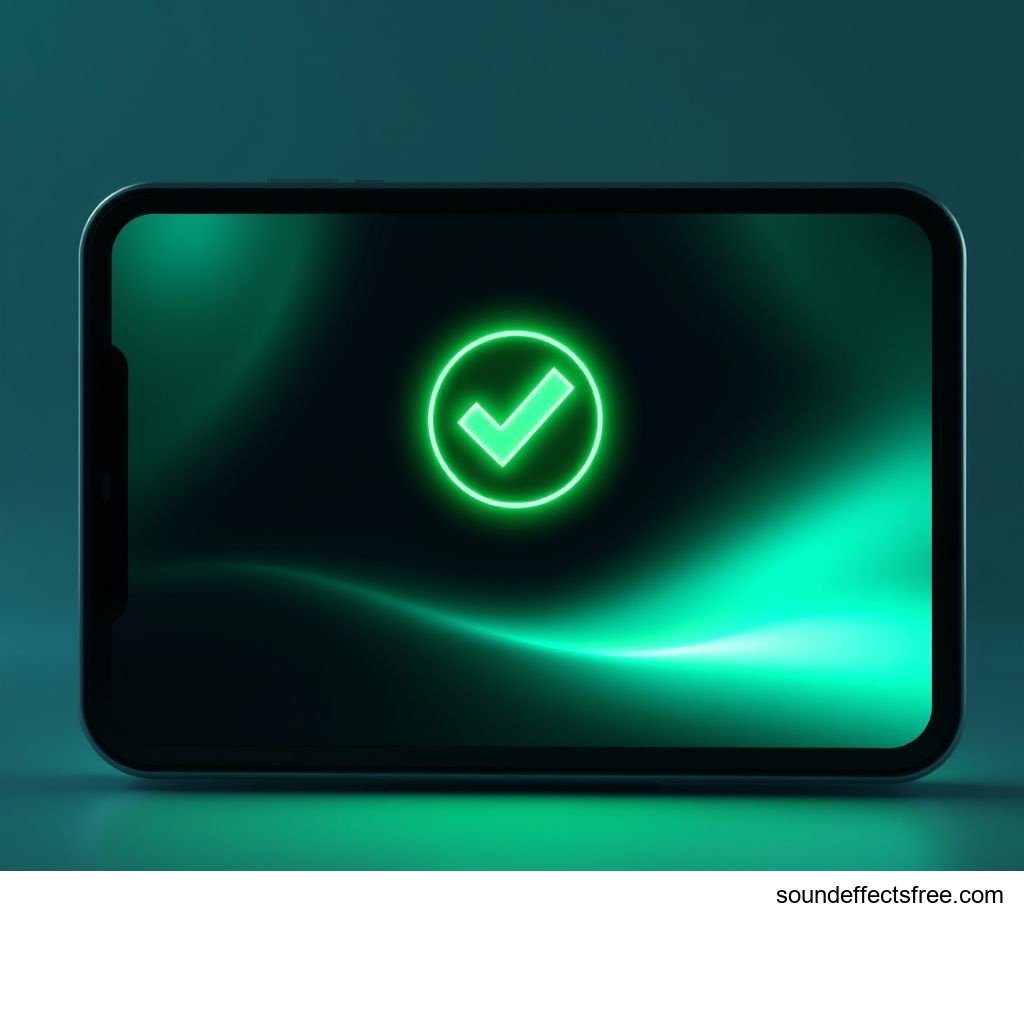Interactive Cursor Glide: The Art of UI Feedback
User interface (UI) design thrives on feedback. Effective UI feedback guides users. One of the most subtle yet impactful elements is the interactive cursor glide. This specific UI sound adds a layer of polish. It enhances the user experience (UX) without distraction. These audio effects provide a vital sonic cue. They confirm user actions and navigational choices. The art lies in making them truly non-intrusive.
Applications in Media
Cursor glide sounds are essential in many digital environments. They make interactions feel more responsive. This type of UI sound creates a seamless experience. It adds a professional touch to any UI.
Industry-Specific Uses
Gaming UI benefits immensely from cursor glide sounds. Every hover and selection provides immediate feedback. This makes the UI feel alive. In web UI design, subtle audio effects improve navigation. They can indicate hover states on buttons or links. Mobile app UI also uses these sounds. A gentle audio cue confirms a successful scroll or swipe. This enhances the tactile feel of the UI. Desktop applications also employ these sonic cues. They confirm menu item selections or panel transitions. The right UI sound elevates the overall user journey. It creates a smooth and satisfying UI.
Creative Techniques
Designers use creative techniques to implement cursor glide UI. They match the sound's character to the brand's aesthetic. A high-tech UI might use futuristic, clean glides. A more organic UI could feature softer, natural tones. The key is to make the sound an extension of the visual UI. It should not just be an added element. Transition sounds for a new page load can include a subtle glide. This provides continuity in the UI. A successful hover sound helps users understand the UI state. These audio effects deepen user engagement. They make the UI feel intuitive and responsive.
Technical Analysis
Understanding the technical aspects of cursor glide sounds is crucial. It helps in creating effective UI audio. These sounds are more than simple beeps. They are carefully crafted audio effects.
Waveform Characteristics
A typical cursor glide UI sound has a smooth waveform. It features a gentle attack and decay. This prevents abruptness. The sound should fade in and out gracefully. This creates a natural transition. Spikes or harsh peaks are usually avoided. They can be jarring in a UI context. The duration of the glide is also critical. It must be short and precise. This ensures the sound does not overstay its welcome. An overly long UI sound can become annoying. The waveform might show a slight pitch shift. This can indicate direction or speed within the UI.
Frequency Profile
The frequency profile of a cursor glide is often in the mid-to-high range. This ensures it cuts through background noise. Yet, it remains subtle. Lower frequencies might be too intrusive for a UI element. They could interfere with other audio content. A slight emphasis on the higher end adds a sense of lightness. It makes the UI feel nimble. Conversely, a heavier UI might use slightly lower frequencies. This depends on the desired feel. The sound should not have a strong resonant peak. This could make it stand out too much. A balanced frequency response is key for a non-intrusive UI.
Production Tips
Creating high-quality cursor glide sounds requires specific techniques. Good production ensures they blend perfectly with the UI.
Recording & Editing
Start with clean source audio. You can record various subtle materials. These might include light friction or air movement. Consider using high-quality microphones. Record in a quiet environment. This minimizes unwanted noise. During editing, remove any clicks or pops. Use noise reduction software if needed. Apply a gentle EQ to shape the sound. Roll off unnecessary low or high frequencies. This keeps the UI sound focused. Normalize the sound to an appropriate level. It should not be too loud or too quiet. A smooth fade-in and fade-out is essential. This creates a seamless transition. For web UI or mobile UI, optimize file size.
Software Tools
Digital Audio Workstations (DAWs) are essential for sound design. Tools like Ableton Live, Logic Pro, or Pro Tools are common. Software synthesizers can generate precise tones. They allow fine control over the sound. Plugins like reverbs and delays add spatial depth. However, use them sparingly for UI sounds. Compression can help maintain consistent volume. This ensures the glide is heard clearly. Granular synthesis can create unique textures. It offers fresh options for cursor glide audio effects. Experiment with different sound samples. Many sound effect libraries offer great starting points for UI elements. Pro Sound Effects is a great resource.
Creative Implementation
Beyond basic production, creative implementation elevates UI sounds. It makes them truly memorable.
Layering Methods
Layering multiple sounds can create richer textures. Combine a short "click" with a subtle "whoosh." This creates a more complex glide UI. A gentle bell chime can be layered with a smooth synth pad. This adds a mystical quality. Ensure layers are balanced. No single element should dominate. The goal is a cohesive, unified sound. This approach adds depth to the UI. It provides a more immersive user experience. Different layers can activate based on interaction speed. A quick hover might trigger a simple UI sound. A slower, deliberate selection could trigger a more complex layered sound.
Spatial Effects
Spatial effects position the sound in a virtual space. For a UI, this can mean subtle panning. A cursor moving left might have the sound pan slightly left. This reinforces direction. Reverb and delay can add a sense of space. However, use them very subtly. Too much can make the UI sound muddy. A dry, crisp sound is often preferred for immediate feedback. In 3D UI, spatialization is crucial. The sound could emanate from the hovered object. This makes the UI feel more tangible. It enhances the realism of the interaction. These subtle cues enhance the overall UI.
Sound Pack Integration
Integrating cursor glide sounds effectively is key to a unified UI. It ensures consistency across all interactions.
Using with Other Sounds
Cursor glide UI sounds should complement other UI elements. They need to fit seamlessly with button clicks or notification sounds. Maintain a consistent sonic palette. All UI sounds should share a similar tonal quality. This prevents auditory fatigue. It creates a professional and cohesive UI. For instance, if your UI uses bright, airy sounds, keep glides similar. Avoid mixing overly heavy glides with light button clicks. The goal is a harmonious UI soundscape. Related UI sounds can provide more examples. Consider how the cursor glide sets up the next sound. For instance, a glide could lead into a UI Confirm Tap.
Complete Collection
A comprehensive sound pack offers consistency. It provides a full range of related audio effects. This includes various glides, clicks, and transitions. Using sounds from the same pack ensures sonic unity. It saves time in production. Designers can focus on implementation. It guarantees a cohesive and professional UI. Investing in a good sound pack is vital. Get the full sound pack for comprehensive audio solutions. This ensures your UI is always top-notch.
Conclusion
The interactive cursor glide is more than just an audio effect. It is a fundamental part of effective UI design. These subtle sounds guide users. They provide non-intrusive feedback. A well-designed cursor glide enhances user experience. It creates a fluid and responsive UI. By mastering technical aspects and creative implementation, designers elevate their UI. They build digital experiences that truly resonate. The art of non-intrusive UI feedback sounds is paramount. It makes every interaction feel intuitive and satisfying.
FAQ Section
Q1: What is an interactive cursor glide UI sound? A1: An interactive cursor glide UI sound is a subtle audio effect. It plays when a user's cursor moves across or hovers over UI elements. This sound provides auditory feedback. It confirms movement and enhances the overall user experience.
Q2: Why are subtle audio effects important for UI? A2: Subtle audio effects are crucial for UI because they provide non-intrusive feedback. They guide users through interfaces. These sounds confirm actions, transitions, and hover states. They enhance the UI's responsiveness without being distracting.
Q3: How does a cursor glide sound improve the user experience (UX)? A3: A cursor glide sound improves UX by making interactions feel more responsive and fluid. It offers immediate auditory confirmation of cursor movement. This reinforces the visual feedback. It makes the UI feel alive and intuitive.
Q4: Can cursor glide sounds be used for web UI and mobile UI? A4: Yes, cursor glide sounds are highly versatile. They can be effectively used in both web UI and mobile UI. They provide valuable feedback for hover states on websites. In mobile apps, they can signify swipes, scrolls, or selection confirmations.
Q5: What are common characteristics of a good cursor glide audio effect? A5: A good cursor glide audio effect is typically short, subtle, and has a smooth attack and decay. It usually occupies the mid-to-high frequency range. Its purpose is to provide clear, non-intrusive feedback for UI interactions.





